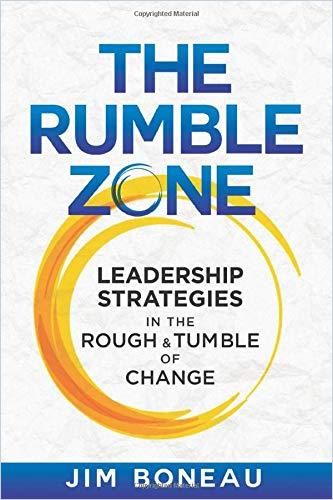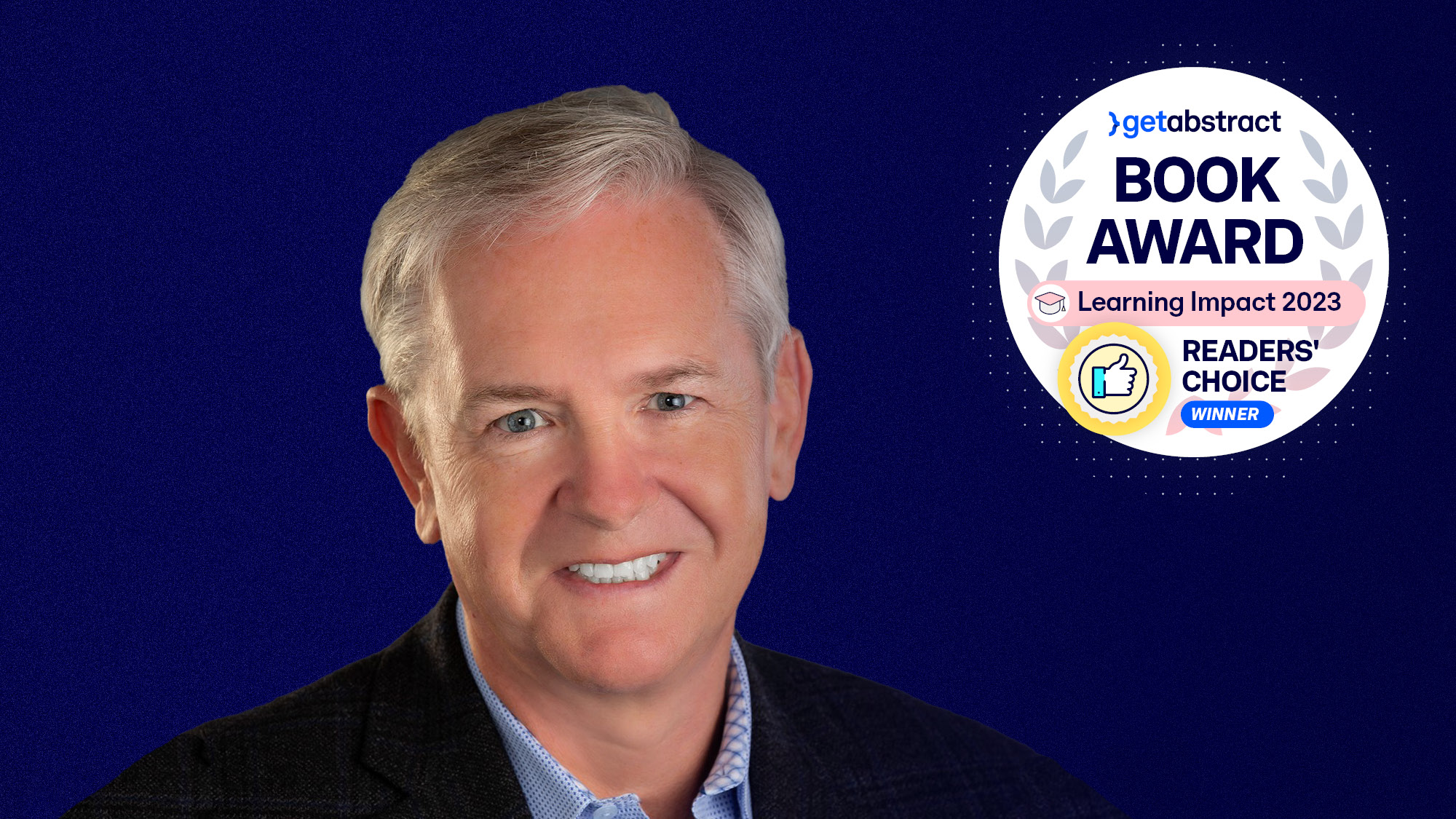“We’re Not Going to Eliminate the Chaos!”

Jim, what is all the fuss about the current search by many corporate employees, L&D professionals and executives for emotional and energetic connections among people?
Well, the idea of team building and building emotional connections has always been involved in the workplace. People don’t only care about the product they’re producing, but also about the people they’re working with. But these past 18 months have been trying. Indeed, we as a society, between COVID-19, between the political situation here in the United States, between the racial reckoning that’s happened – where we’re being pulled apart in so many ways – as individuals, we’re losing trust in institutions, and we’re losing faith in leaders. And I think this reflects in the workplace.
How?
Leaders see the consequences of it in organizations – people not caring about each other, not having a passion for the work, not having empathy when people make mistakes.
We need a new foundation to get the job done and rebuild trust.
Jim Boneau
The virtual environment, and people having to do so much virtually, exponentially makes this problematic.
You write in The Rumble Zone that especially in these times of “rumbles” – where chaotic, rapid change takes place – the “rhythm” among colleagues plays a decisive role, and that one can then bring entire teams or companies into this rhythm. That’s what you do: You are not only advising leaders and companies, but are also a leader yourself in the profession of drum circle facilitation. When did you first notice that both worlds, music and business, can learn from one another – and why?
I had been an engineer in a software company and was a leader running portions of the training and development business in a different one. Twenty-something years ago, we had a conference pulling together a worldwide audience of engineers and trainers. We needed team building, and somebody mentioned a drum circle facilitator who could bring drums and percussion and get everybody to play music together. I said, “Hey, that sounds great. Put it on the schedule.” I just was like, yeah, we’ll do that. But I’d never been to a drum circle. I had never seen anything like it before.
How did it turn out?
Well, then the guy came in. There were 350 of us in the room. He turned the chaos of people hitting drums and percussion into a unified, connected rhythmical groove in 10 minutes. So, we had our two hours of playing together, of getting to reflect with each other about what it was like to go from chaos to connection. We got to see other people trusting us with a rhythm they created, and then we could carry it somewhere else. Afterward, the guy came to me and said: “There’s a training in two weeks in Hawaii on how to lead these kinds of drum circles.”

Did you go?
At first, I thought, I don’t know what I’m getting into – but I need to do this because it’s calling me in a big way. So, yes, I went to this training, and the guy that led it is now my friend, Arthur Hall. He always said, “Ok, if you have a big experience in this training, please don’t go home and quit your job. You need to keep your job and take small steps.” So, I went home and quit my job a month later. [Laughs.] I resigned from the software company, packed up my car, and started driving around the country, visiting other drummers and other people doing this work. Just to learn.
You followed your passion, and since then, you’ve been providing the right rhythm in companies?
It wasn’t just in corporate settings. I was in prisons, hospitals with cancer patients, assisted living facilities for elders, and certainly in a lot of workplaces as well. There are so many different tools and advantages that can come from people drumming together. Back then, we were just beginning to understand the science that now we have a greater understanding about. Not only is this viable – it builds connections with people, but it also creates new neural pathways in our brains that fuel innovation and creativity. So, when we think about what people need in an organization, I mean, obviously, not only do they need people to be able to communicate and connect, but they need new ideas. They need people to think in different ways. What we’ve learned in the past 10 years:
Playing music with other people gets more neural pathways going in the brain than any other activity that scientists are currently tracking with brain scans. These new pathways support us in so many ways.
Jim Boneau
Can you give a specific example from the corporate world to explain how to get this knack in concrete terms and what’s in it for leaders in their day-to-day work?
We are still working on getting the data and the numbers from some of the organizations I’ve worked with. What we saw in a particular software company, for example, is that there is an increased amount of energy and increased amount of willingness to think differently. But, more importantly, there emerges a new willingness to listen to other people’s ideas and recognize that it’s not just my idea that’s important, and it’s not just yours, but it’s the combination of those ideas, which reflects precisely what we see in the drum circle. One person playing by themselves? Not nearly as fun or engaging as three people contributing to a single song!
But first you have to learn to listen to yourself in order to be in tune with others and to perform well? I mean, as part of a drum circle as well as in a business team.
Both start from the inside of oneself. Very often, when you put a drum in front of people, they begin to hit it as fast as they can and as much as they can. It always makes me wonder: Is that the way that you talk as well? To fill up all of the space of the people around you, not giving anybody else space to be able to communicate? Because that’s what happens: We just take our usual form of communication and being and translate that to the drum. So, this gives people an opportunity to stop for a minute and ask themselves, “Am I talking this way all the time? Can I do something different?” As you said, it starts with me maybe creating just a little bit more space in a rhythm to allow room for others that I can then begin to hear. I need that proximity to listen to your rhythm, or I can start to see what you happen to be playing.
Unfortunately, the pandemic has taken away precisely this proximity. How can we find the rhythm when we can’t be together?
That has been very challenging in the COVID days. When you make music in person, you hear all of those sounds coming together, and you can listen to the collective. But via Teams or Zoom, only one sound at a time makes it through that pipe of the internet. You can’t have people playing concurrently, but you can create a musical track that everybody can play to on their own. So what people are doing, rather than hearing other people drumming, they hear a recorded track. They’re seeing their colleagues who are also playing music. And between these two, we use this now as an opportunity as a new stepping stone to help improve those virtual collaboration skills.
How exactly?
We acknowledge that it’s not the same as being in person. But I think engineers and people trying to create innovative solutions and organizations would say the same thing: It’s not the same that we’re all virtual, but it doesn’t mean that we can’t be innovative. It doesn’t mean that we can’t be connected. We just must find these new ways of doing it. So, let’s give ourselves the freedom to explore something different! Rhythm and drumming have been a gateway to that.
Now, we’re heading from one rumble – everybody being forced to stay at home – into a new one: The hybrid workplace. In this new rumble, we don’t even know where colleagues are, what state they’re in, or if we’ll see them today or tomorrow. So, what can we do to keep the rhythm?
You know, a lot of times in the rumble, it sounds like a lot of noise. And everything that you’ve just described – what’s happening in the workplace – can be a lot of noise as well. It distracts us from the goals we want to achieve. But I don’t think this is about eliminating the noise. We’re not going to eliminate the chaos that’s happening in the world! Instead, we must recognize that we are in trouble, in turmoil. Right now, as a person, what you can do: Quiet your voice for a moment so that you can have some empathy and some understanding about somebody else in your organization who you need to collaborate with or somebody else that you need to lead.
You know, so many times, leaders think they just need to say more than other people. Well, that just adds to the noise!
Jim Boneau
Be more of a questioner and a listener rather than advocating a point of view. Lean into that noise and that chaos that’s happening by asking people, “How are you doing within this?” Take the time to really listen to them, and don’t think that you can “solve” the problem and eliminate the noise.
To play along correctly, you first need to listen appropriately.
Yes. Listen and say, “I’ve got your back, and I’m with you. And we’re going to get through this.” That’s the greatest thing that leaders can do right now as we go to this next step. I mean, sure, there are a lot of tools. There are a lot of processes and procedures on how we can work. And those things are necessary. But if you don’t have trust, if you don’t have the communication and the willingness for people to try something different, none of those other tools are going to work.
But what if you just can’t find shared rhythms or melodies anymore? Is that a sign that a company, a team, is wrongly composed, and that its time is over?
The question is: How do I endure this on an ongoing basis? For some people, their resilience will manifest as, “I can make this work inside of this organization. We’re not going to be at the level of efficiency that we used to be – but that will change.” For others, the resilience is, “Yeah, I’m going to have to make my way. And inside this organization is not that way at all.” And so, you know, they’re doing a favor for the organization by saying, “Look, I can’t work in this environment anymore. I’m going to have to pursue something else.” We’re seeing that in many places where people are leaving the organization to work to help people in need right now.
So, my advice for the organizational leader is: Have a great deal of empathy for your people’s decisions.
Jim Boneau
Everybody’s trying to do the best they can in a very complex rumbling environment right now. The more we can create environments of inclusion, acceptance and trust, the better off the organization will be in these new realities that we’ll all be working within.
About the Author
Jim Boneau has worked as an internationally recognized executive coach and facilitator of leadership and organizational development. He’s worked with executive leaders in organizations including Corning, Unity3D, Microsoft, The Mayo Clinic, and the American Association of Corporate Council. As a companion to the leadership development practice, Jim is a talented musician. He has become a leader in the profession of drum circle facilitation, teaching drum circle facilitation skills for over two decades in the US, Europe, and Japan.








